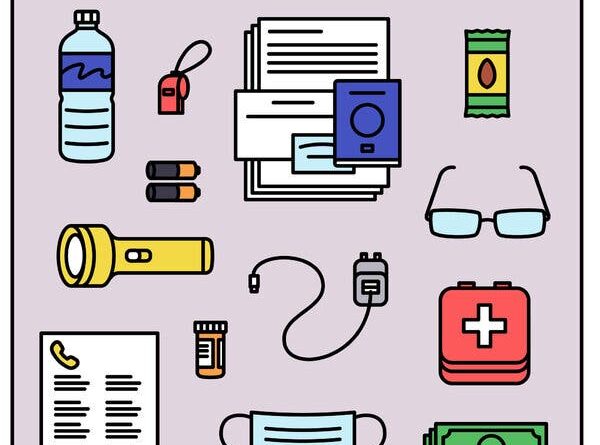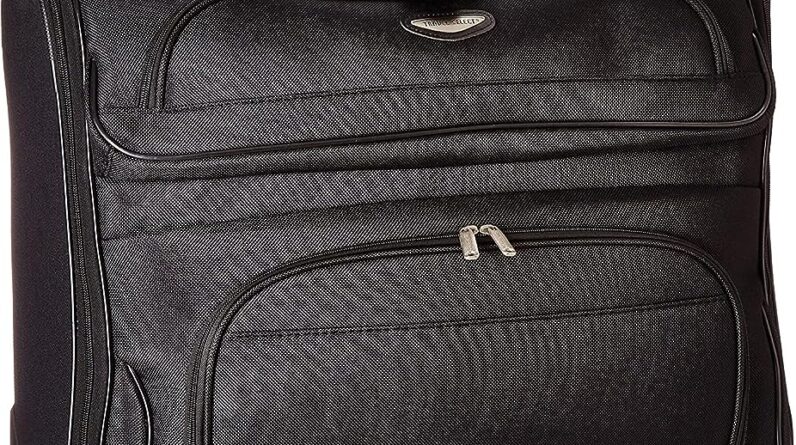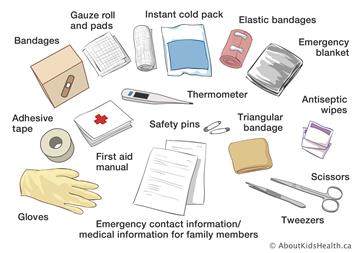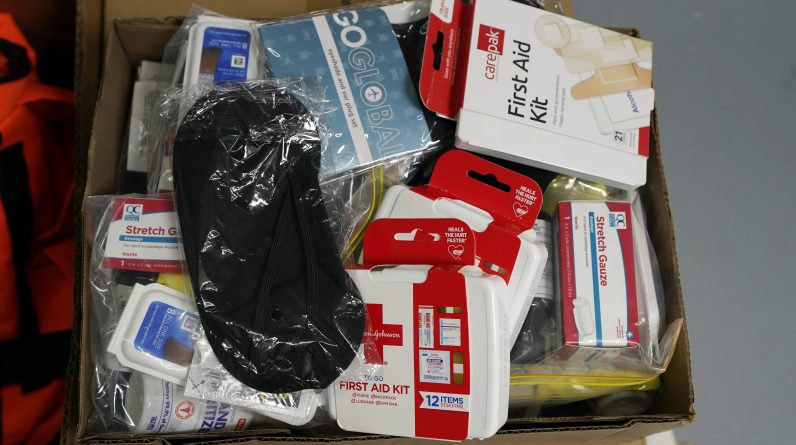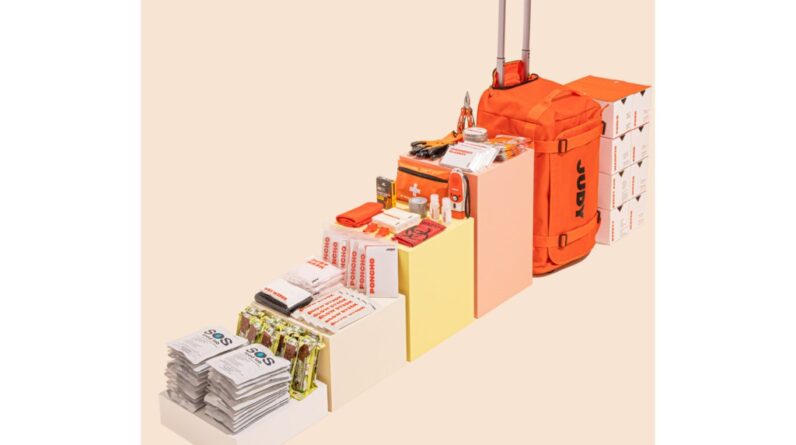
Are you prepared for emergencies? In today’s unpredictable world, it is more important than ever to have a plan in place. The Federal Emergency Management Agency (FEMA) has advocated a 12-step guide for emergency preparedness that includes everything from practicing drills to assembling a supply kit. Shockingly, nearly half of U.S. adults are not adequately prepared for emergencies, according to the CDC. However, expert survivalists stress the importance of having emergency kits for self-sustainability and preparedness. From wilderness kits to medical kits, there are a variety of options to choose from. So, whether it’s a pandemic, a natural disaster, or a roadside emergency, having the right supplies on hand can make all the difference.
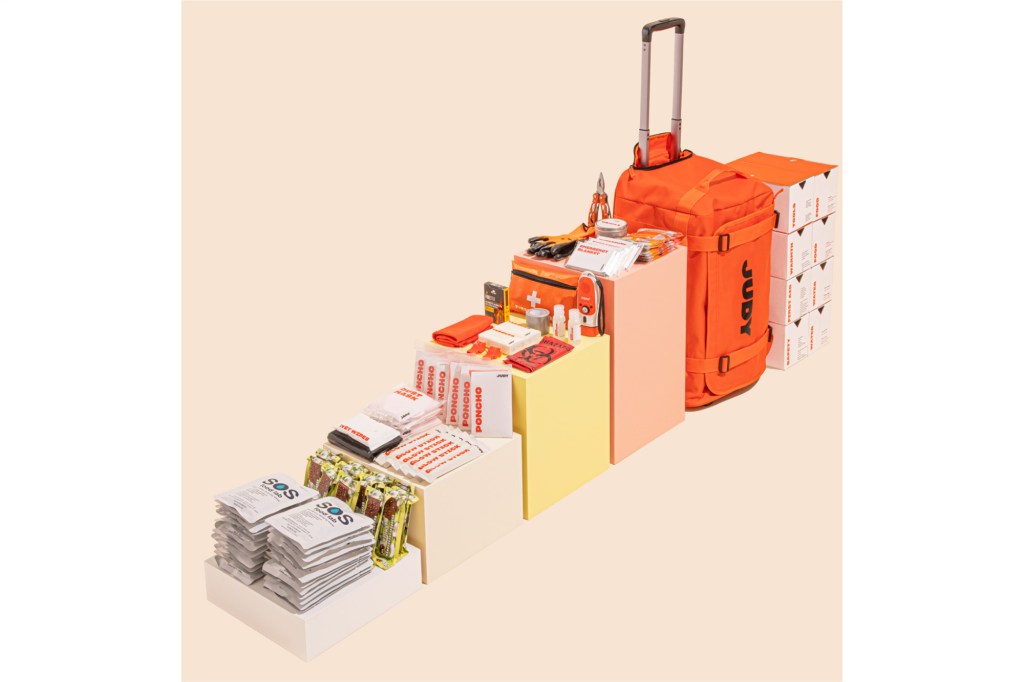
This image is property of nypost.com.
Introduction
Welcome! In this article, we will explore the importance of emergency preparedness and the various steps you can take to ensure you are prepared for any unexpected events or disasters. We will also delve into the different types of emergency kits that are available and discuss the essential items that should be included in each kit. By the end of this article, you’ll have a thorough understanding of how to be prepared for emergency situations.
The Importance of Emergency Preparedness
Emergency preparedness is crucial in today’s ever-changing world. With the growing global market for incident and emergency management, it is evident that the need for preparedness is on the rise. Factors such as the pandemic, climate-related catastrophes, surging crime, and conflicts contribute to this increase. Being prepared allows you to navigate through these challenging times with confidence and a sense of security.
The Federal Emergency Management Agency (FEMA) strongly recommends following a 12-step guide for emergency preparedness. This guide encompasses a range of actions that can significantly enhance your ability to handle emergencies effectively. It includes steps such as making a plan, staying informed, signing up for alerts and warnings, creating a communication plan, building an emergency supply kit, checking your insurance coverage, preparing your home, safeguarding important documents, developing an evacuation plan, practicing and reviewing your plan, helping your community, and staying informed and connected.
Despite the importance of emergency preparedness, a significant number of U.S. adults still lack the necessary resources and plans. According to the CDC, nearly half of U.S. adults do not have a solid plan in place for emergencies. It is crucial to address this issue and educate individuals on the importance of being prepared.

This image is property of nypost.com.
Advocated 12-Step Guide for Emergency Preparedness
Let’s dive deeper into the 12-step guide advocated by FEMA for emergency preparedness.
Step 1: Make a Plan
Creating a plan is the foundation of emergency preparedness. Identify potential hazards in your area, establish communication channels with family members and loved ones, designate meeting points, and determine evacuation routes. This plan will serve as a roadmap during emergencies and ensure everyone is on the same page.
Step 2: Stay Informed
Stay informed about potential risks and the latest developments in your area. Sign up for emergency alerts and warnings provided by local authorities and familiarize yourself with the emergency protocols and procedures in your community. Knowledge is power when it comes to emergency situations.
Step 3: Sign Up for Alerts and Warnings
Register for emergency alerts and warnings to receive notifications directly from local authorities. These alerts can provide critical information about impending emergencies, allowing you to take necessary precautions and actions to protect yourself and your loved ones.
Step 4: Create a Communication Plan
Communication is key during emergencies. Establish a communication plan with your family and loved ones, including designated emergency contact numbers, alternative communication methods, and meeting points. This plan will ensure smooth communication and coordination, even in chaotic situations.
Step 5: Build an Emergency Supply Kit
An emergency supply kit is a vital component of preparedness. Include essential items such as non-perishable food, water, a first aid kit, a flashlight, batteries, a radio, extra clothing, prescription medications, personal hygiene items, and important documents. Customize your kit to meet the specific needs of your family.
Step 6: Check Your Insurance Coverage
Review your insurance coverage to ensure it adequately protects you and your property during emergencies. Understand the extent of your coverage and consider adding additional policies if necessary. Be aware of any exclusions and limitations that might impact your ability to recover from an emergency situation.
Step 7: Prepare Your Home
Take steps to make your home more resilient to emergencies. Install smoke detectors, fire extinguishers, carbon monoxide detectors, and security systems. Secure heavy furniture and appliances, and ensure your home’s structure is well-maintained. By preparing your home, you can minimize the risk of damage and increase overall safety.
Step 8: Safeguard Important Documents
Secure essential documents such as passports, birth certificates, insurance policies, wills, and financial records. Make copies of these documents and keep them in a safe place, either physically or digitally. This will ensure that you can quickly access and recover important information in the event of an emergency.
Step 9: Develop an Evacuation Plan
In emergencies that require evacuation, having an evacuation plan is crucial. Identify multiple evacuation routes and practice evacuation drills with your family. Determine alternative shelter options and know the locations of emergency shelters in your community. By being prepared to evacuate, you can ensure your safety and the safety of your loved ones.
Step 10: Practice and Review Your Plan
Practice makes perfect, even in emergency preparedness. Regularly review and update your emergency plan. Conduct drills and tabletop exercises with your family to ensure everyone understands their roles and responsibilities. By practicing your plan, you can identify any gaps or areas that need improvement.
Step 11: Help Your Community
In times of emergencies, communities come together to support one another. Get involved in community emergency response efforts. Volunteer for local emergency response organizations, become familiar with community resources, and assist your neighbors in times of need. Together, we can create a stronger and more resilient community.
Step 12: Stay Informed and Connected
Stay connected with local authorities, emergency management agencies, and community organizations. Stay informed about ongoing developments, changes in protocols, and preparedness initiatives. By staying engaged, you can continue to enhance your preparedness and contribute to the overall safety of your community.
Different Types of Emergency Kits
Emergency kits are essential for self-sustainability and preparedness. Let’s explore some of the different types of emergency kits that are recommended to ensure you have the necessary supplies for various situations.
Wilderness Kits
Wilderness kits are designed for outdoor enthusiasts and travelers who may find themselves in remote or challenging environments. These kits should include essential items such as water filters for purifying water from natural sources, fire-making methods like fire starters or waterproof matches, emergency shelters such as lightweight tents or blankets, headlamps for hands-free illumination, whistles for signaling, signaling devices like mirrors or flares, and wound care items such as bandages, antiseptic wipes, and medical tape. Wilderness kits are crucial for those who venture into the great outdoors.
Medical Kits
Medical kits are essential for addressing injuries and providing basic medical care during emergencies. These kits should contain basic medical supplies such as bandages of various sizes, gauze, adhesive tape, antiseptic solution, disposable gloves, tweezers, scissors, and a thermometer. Additionally, it is crucial to include any necessary medications specific to you and your family’s medical needs. Medical kits can be a literal lifesaver in emergency situations.
Roadside Kits
Roadside kits are specifically designed for vehicle emergencies. Include items such as a spare tire, jack and lug wrench, jumper cables, a flashlight, batteries, a reflective vest, roadside flares or triangle reflectors, a tire pressure gauge, a basic toolkit, and a portable phone charger. These kits ensure that you are prepared for unexpected breakdowns or accidents while on the road.
Food Supply Kits
Food supply kits are designed to provide you with sustenance during emergencies when access to food may be limited. These kits should include non-perishable food items with a long shelf life, such as canned goods, energy bars, dried fruits, nuts, and ready-to-eat meals. It is important to regularly check and rotate the food items in these kits to maintain freshness and maximize their usability.
Communication and Navigation Kits
Communication and navigation kits are crucial for staying connected and finding your way during emergencies. These kits should include a reliable two-way radio or a satellite phone to establish communication when traditional networks may be down. Additionally, include a compass, maps of your area, a GPS device, and a portable charger to ensure uninterrupted navigation and communication capabilities.

This image is property of nypost.com.
Essential Items for Wilderness Kits
Let’s delve deeper into the essential items that should be included in wilderness kits to ensure your safety and preparedness when venturing into remote or challenging environments.
Water Filters
Access to clean drinking water is essential in any outdoor setting. Include lightweight water filters or purification tablets that can remove impurities and make water safe for consumption. This ensures that you have a reliable source of drinking water, even if natural water sources are questionable.
Fire-Making Methods
Being able to start a fire is crucial for warmth, cooking, and signaling for help. Include fire starters, waterproof matches, or a reliable lighter in your wilderness kit. These items will enable you to create a fire quickly and efficiently, even in adverse weather conditions.
Emergency Shelters
In case of unforeseen circumstances, having emergency shelter options is paramount. Lightweight tents, lightweight tarps, or emergency blankets should be included in your wilderness kit. These items provide protection from the elements and offer a safe refuge during emergencies.
Headlamps
A reliable source of illumination is essential during nighttime or low-light situations. Include headlamps in your wilderness kit, as they provide hands-free lighting and allow you to navigate or perform tasks with ease. Be sure to pack extra batteries as well.
Whistles
Whistles are an excellent signaling device in emergencies. Include a durable and loud whistle in your wilderness kit to attract attention and signal for help if needed. Whistles are lightweight, compact, and can be heard over long distances, making them an essential item for any outdoor adventure.
Signaling Devices
Adding signaling devices to your wilderness kit increases your chances of being located by rescuers. Include items like mirrors, flares, or brightly colored cloth to attract attention. These devices can be indispensable in situations where you need to attract the attention of search and rescue teams.
Wound Care Items
Injuries can occur in any environment, so it’s crucial to have wound care items in your wilderness kit. Include a variety of bandages, antiseptic wipes, medical tape, and tweezers for removing splinters or ticks. These items will enable you to handle minor injuries and prevent complications while in the wilderness.
Basic Contents of Medical Kits
Medical kits are an essential component of emergency preparedness. Let’s explore the basic contents that should be included in medical kits to ensure you can provide necessary medical care during emergencies.
Basic Medical Supplies
Include bandages of various sizes, sterile gauze pads, adhesive tape, antiseptic solution or wipes, disposable gloves, tweezers, scissors, and a thermometer. These items will allow you to address wounds, control bleeding, prevent infection, and monitor body temperature during emergency situations.
Medications
In addition to basic medical supplies, it is crucial to include any necessary medications in your medical kit. If you or your family members have specific medical conditions or require daily medications, ensure an adequate supply is included in the kit. Rotate medications regularly to maintain their effectiveness and check expiration dates frequently.
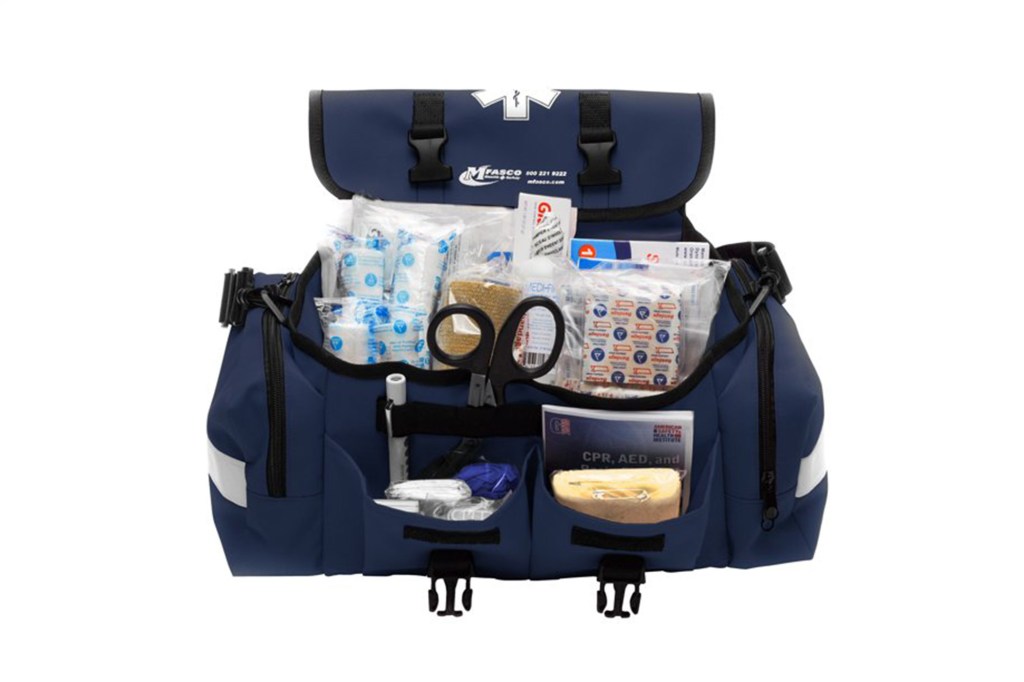
This image is property of nypost.com.
Recommended Emergency Kits for Purchase
If assembling your own emergency kit seems overwhelming, there are several recommended emergency kits available for purchase. Let’s explore a few specific products that can make your preparedness journey easier.
First Aid Kits
First aid kits are readily available and provide a comprehensive range of medical supplies for emergency situations. These kits typically include bandages, gauze pads, adhesive tape, antiseptic wipes, disposable gloves, tweezers, scissors, and more. Purchasing a first aid kit allows you to have all the necessary medical supplies in one convenient package.
Trauma Kits
Trauma kits are designed to handle more severe injuries and are typically used by first responders or individuals with advanced medical training. These kits include supplies for stopping severe bleeding, managing fractures, and stabilizing injuries until professional help arrives. Trauma kits are ideal for those with the knowledge and training to handle more complex medical emergencies.
Survival Backpacks
Survival backpacks are comprehensive kits that include a wide range of emergency supplies and equipment. These kits are designed to sustain a single person or an entire family for an extended period during emergencies. Survival backpacks can include food, water, shelter, communication devices, tools, personal hygiene items, first aid supplies, and more. Purchasing a survival backpack ensures you have all the necessary items in one convenient package, ready to grab and go during an emergency.
In conclusion, emergency preparedness is crucial for navigating through unpredictable and challenging situations. By following the recommended 12-step guide for emergency preparedness, you can ensure that you and your loved ones are equipped to handle emergencies effectively. Additionally, having the appropriate emergency kits, such as wilderness kits, medical kits, roadside kits, food supply kits, and communication and navigation kits, ensures you have the necessary supplies to sustain yourself during emergency situations. Stay informed, practice your emergency plan, and be prepared. Remember, being prepared can make all the difference during an emergency. Stay safe, and prioritize your preparedness today!

